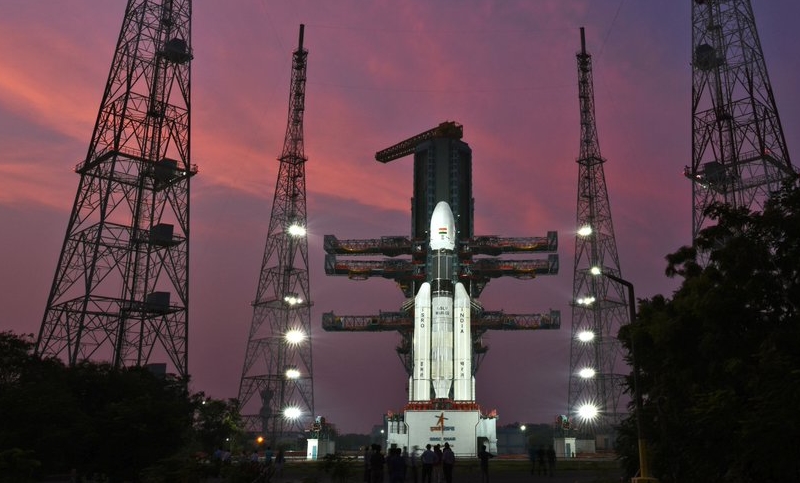On Wednesday, the launch of India’s heaviest rocket, the GSLV-Mk III, carrying 3,423 kg communication satellite GSAT-29, from the ISRO’s Sriharikota centre (Satish Dhawan Space Centre), in Andhra Pradesh. The launch took place at 5.08 pm, carrying the GSAT-29 satellite, that has been set into the Geostationary Transfer Orbit (GTO). With the help of the thrusters, the satellite will be placed in Earth’s Geostationary Orbit (GEO). The rocket has proven its ability by putting the satellite into the GTO just within sixteen minutes.

The ISRO chairman K Sivan said, “Today India has achieved a significant milestone. The GSLV Mk III, India’s heaviest launcher, has launched GSAT 29. The launch completed the developmental flights of the rocket.”
The launch of GSLV Mk III is the second developmental flight of the rocket. It carried its first development flight on June 5, 2017, in which it successfully launched a 3,136 kg GSAT-19 satellite (the first heaviest satellite launched from India). ISRO has plans of sending the astronauts to space in the 2022 Gaganyaan mission with the help of the same rocket.
The rocket is 43.4 meters tall and weighs around 640 tonnes, having a capacity of carrying up to four tonnes of weight to space. It is a heavy-lift three-stage rocket. The first stage consists of two solid fuel strap-on engines, at the second stage it has a liquid propellant core, and the third stage is for a cryogenic engine. India is one of the six countries, including the US, Russia, France, Japan and China, to own the cryogenic engine technology.
The GSAT 29 satellite contains the communication transponders to provide communication in remote regions of India, specifically in Jammu Kashmir and the northeast, under the Digital India programme.
A spokesperson from ISRO said. “The GSAT 29 carries Ka/Ku-band high throughput communication transponders intended to meet the communication requirements of users including those in remote areas. In addition, several new technologies such as Q/V-band payload, data transmission through optical communication link will be demonstrated. This will help in realising future advanced satellites.’’
ISRO has been doing amazingly well in its space missions for the past few years, and now it intends to have ten more launches before the new year. And the successful launch of the GSLV Mk III rocket has confirmed the moon mission Chandrayaan 2, that will be carried out in January next year and India’s first human spaceflight programme scheduled for 2022.

Yashica is a Software Engineer turned Content Writer, who loves to write on social causes and expertise in writing technical stuff. She loves to watch movies and explore new places. She believes that you need to live once before you die. So experimenting with her life and career choices, she is trying to live her life to the fullest.